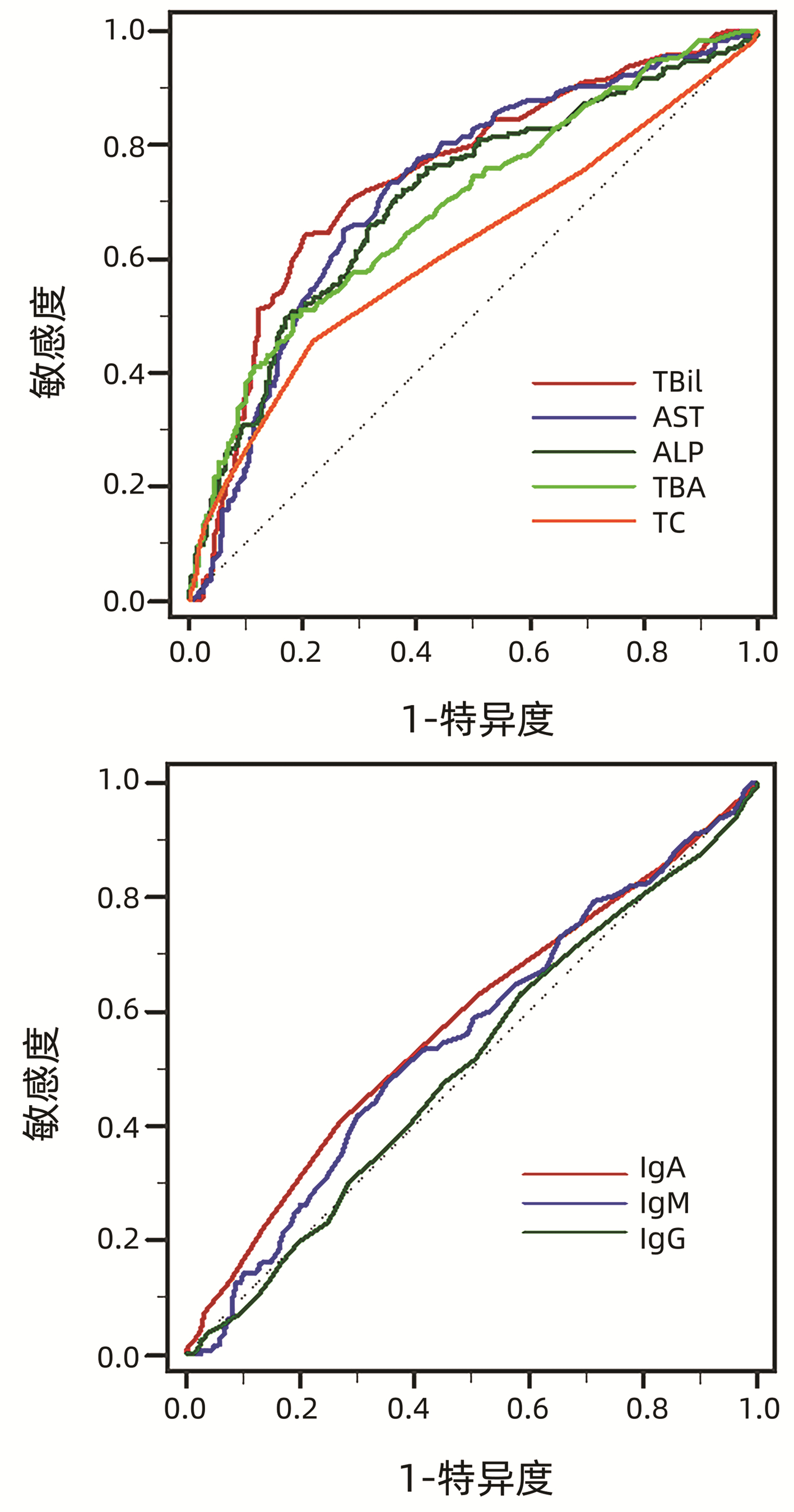| [1] |
HIRSCHFIELD GM, MASON A, LUKETIC V, et al. Efficacy of obeticholic acid in patients with primary biliary cirrhosis and inadequate response to ursodeoxycholic acid[J]. Gastroenterology, 2015, 148(4): 751-761. e8. DOI: 10.1053/j.gastro.2014.12.005. |
| [2] |
LINDOR KD, BOWLUS CL, BOYER J, et al. Primary biliary cholangitis: 2018 practice guidance from the American Association for the Study of Liver Diseases[J]. Hepatology, 2019, 69(1): 394-419. DOI: 10.1002/hep.30145. |
| [3] |
Chinese Society of Hepatology, Chinese Medical Association; Chinese Society of Gastroenterology, Chinese Medical Association; Chinese Socitety of infectious Diseases, Chinese Mdical Association. Consensus on the diagnosis and management of primary biliary cirrhosis(cholangitis) (2015)[J]. J Clin Hepatol, 2015, 31(12): 1980-1988. DOI: 10.3969/j.issn.1001-5256.2015.12.004. |
| [4] |
CORPECHOT C, ABENAVOLI L, RABAHI N, et al. Biochemical response to ursodeoxycholic acid and long-term prognosis in primary biliary cirrhosis[J]. Hepatology, 2008, 48(3): 871-877. DOI: 10.1002/hep.22428. |
| [5] |
CORPECHOT C, CHAZOUILLÈRES O, POUPON R. Early primary biliary cirrhosis: Biochemical response to treatment and prediction of long-term outcome[J]. J Hepatol, 2011, 55(6): 1361-1367. DOI: 10.1016/j.jhep.2011.02.031. |
| [6] |
DICKSON ER, GRAMBSCH PM, FLEMING TR, et al. Prognosis in primary biliary cirrhosis: Model for decision making[J]. Hepatology, 1989, 10(1): 1-7. DOI: 10.1002/hep.1840100102. |
| [7] |
LAMMERS WJ, HIRSCHFIELD GM, CORPECHOT C, et al. Development and validation of a scoring system to predict outcomes of patients with primary biliary cirrhosis receiving ursodeoxycholic acid therapy[J]. Gastroenterology, 2015, 149(7): 1804-1812. e4. DOI: 10.1053/j.gastro.2015.07.061. |
| [8] |
CARBONE M, SHARP SJ, FLACK S, et al. The UK-PBC risk scores: Derivation and validation of a scoring system for long-term prediction of end-stage liver disease in primary biliary cholangitis[J]. Hepatology, 2016, 63(3): 930-950. DOI: 10.1002/hep.28017. |
| [9] |
|
| [10] |
LIAN C, ZHAO Y, SUN J, et al. Role of cell autophagy in the generation of IgM and hepatic fibrosis in primary biliary cholangitis[J]. Clin Rheumatol, 2020, 39(11): 3499-3506. DOI: 10.1007/s10067-020-05111-6. |
| [11] |
|
| [12] |
YANG N, TIAN SY, ZHANG M, et al. Effect of ursodeoxycholic acid combined with glucocorticoid in the treatment of primary biliary cholangitis with autoimmune hepatitis[J]. Med & Pharm J Chin PLA, 2021, 33(3): 72-77. DOI: 10.3969/j.issn.2095-140X.2021.03.016. |
| [13] |
SMETS L, VERBEEK J, KORF H, et al. Improved markers of cholestatic liver injury in patients with primary biliary cholangitis treated with obeticholic acid and bezafibrate[J]. Hepatology, 2021, 73(6): 2598-2600. DOI: 10.1002/hep.31613. |
| [14] |
KIKUCHI K, HSU W, HOSOYA N, et al. Ursodeoxycholic acid reduces CpG-induced IgM production in patients with primary biliary cirrhosis[J]. Hepatol Res, 2009, 39(5): 448-454. DOI: 10.1111/j.1872-034X.2008.00474.x. |
| [15] |
TAKANO K, SAEKI C, OIKAWA T, et al. IgM response is a prognostic biomarker of primary biliary cholangitis treated with ursodeoxycholic acid and bezafibrate[J]. J Gastroenterol Hepatol, 2020, 35(4): 663-672. DOI: 10.1111/jgh.14900. |
| [16] |
NAKAMURA M, KONDO H, TANAKA A, et al. Autoantibody status and histological variables influence biochemical response to treatment and long-term outcomes in Japanese patients with primary biliary cirrhosis[J]. Hepatol Res, 2015, 45(8): 846-855. DOI: 10.1111/hepr.12423. |
| [17] |
ABE K, TAKAHASHI A, NOZAWA Y, et al. The utility of IgG, IgM, and CD138 immunohistochemistry in the evaluation of autoimmune liver diseases[J]. Med Mol Morphol, 2014, 47(3): 162-168. DOI: 10.1007/s00795-014-0082-z. |
| [18] |
LUO Y, BRIGHAM D, BEDNAREK J, et al. Unique cholangiocyte-targeted IgM autoantibodies correlate with poor outcome in biliary atresia[J]. Hepatology, 2021, 73(5): 1855-1867. DOI: 10.1002/hep.31504. |
| [19] |
YANG XL, ZHUANG L, HE HY, et al. Correlation between serum indexes and pathological stages in patients with PBC, and Logistic regression analysis on risk factors of patients with advanced PBC[J]. Chin J Gastroenterol Hepatol, 2019, 28(10): 1157-1161. DOI: 10.3969/j.issn.1006-5709.2019.10.014. |
| [20] |
JOHN BV, KHAKOO NS, SCHWARTZ KB, et al. Ursodeoxycholic acid response is associated with reduced mortality in primary biliary cholangitis with compensated cirrhosis[J]. Am J Gastroenterol, 2021, 116(9): 1913-1923. DOI: 10.14309/ajg.0000000000001280. |
| [21] |
GOET JC, MURILLO PEREZ CF, HARMS MH, et al. A comparison of prognostic scores (Mayo, UK-PBC, and GLOBE) in primary biliary cholangitis[J]. Am J Gastroenterol, 2021, 116(7): 1514-1522. DOI: 10.14309/ajg.0000000000001285. |















 DownLoad:
DownLoad:
